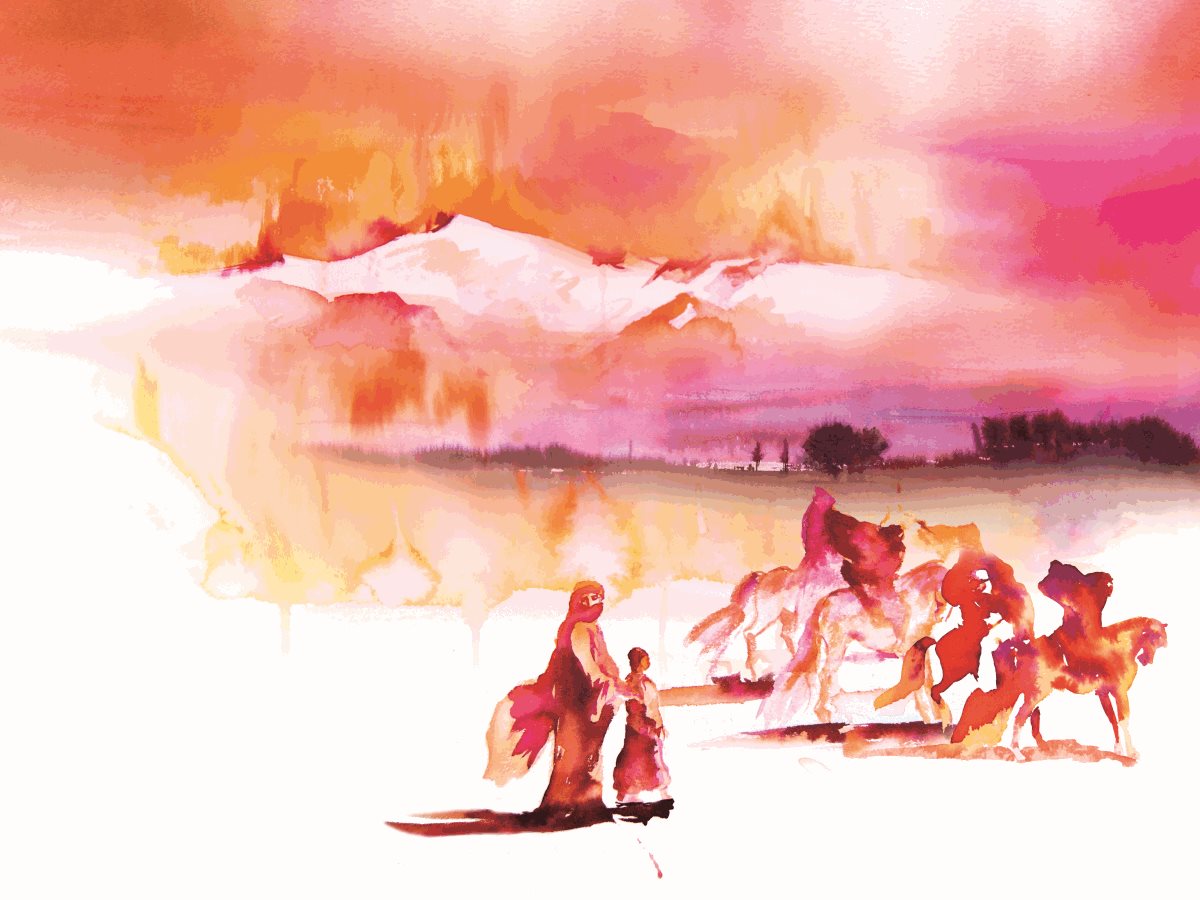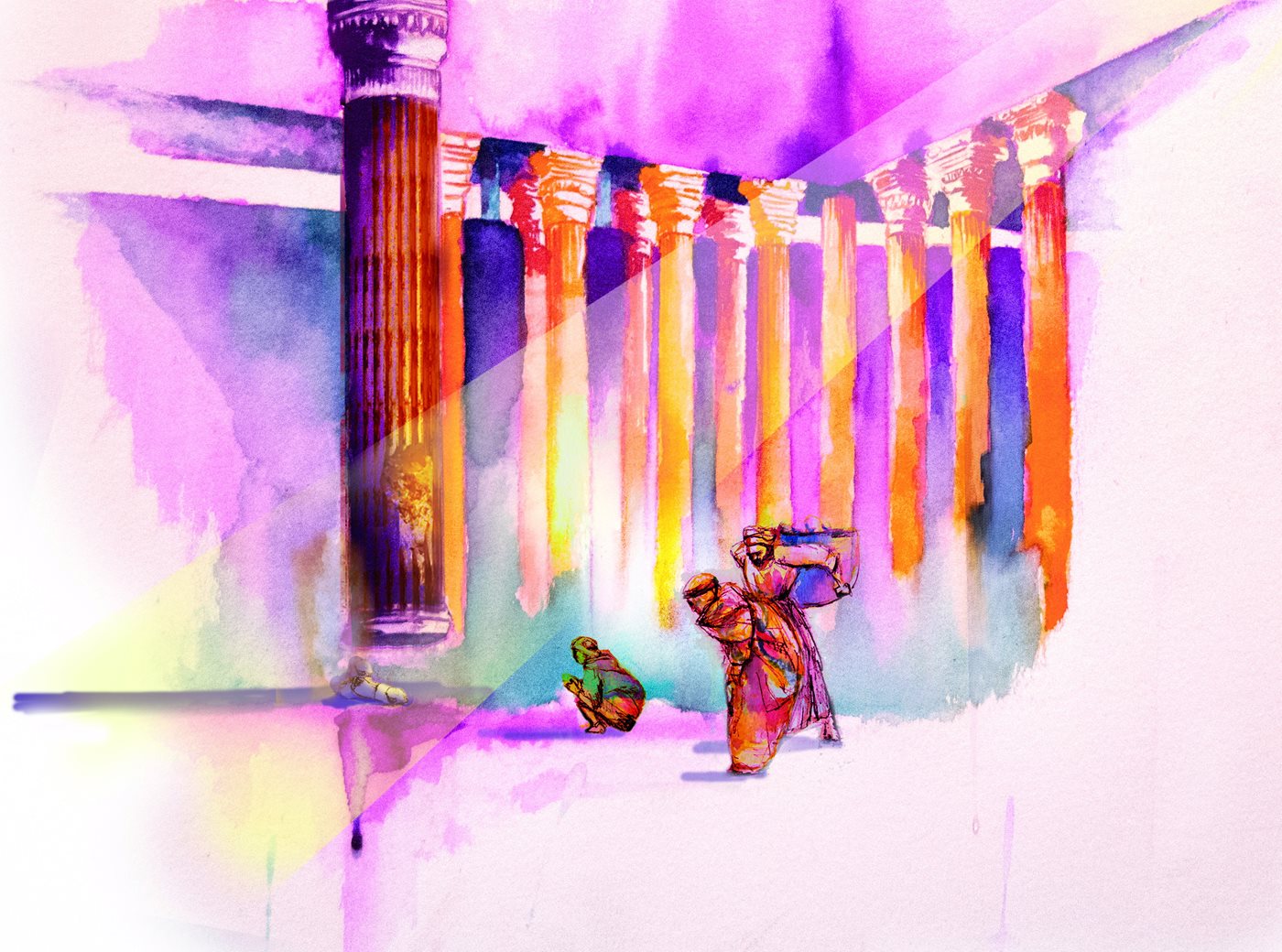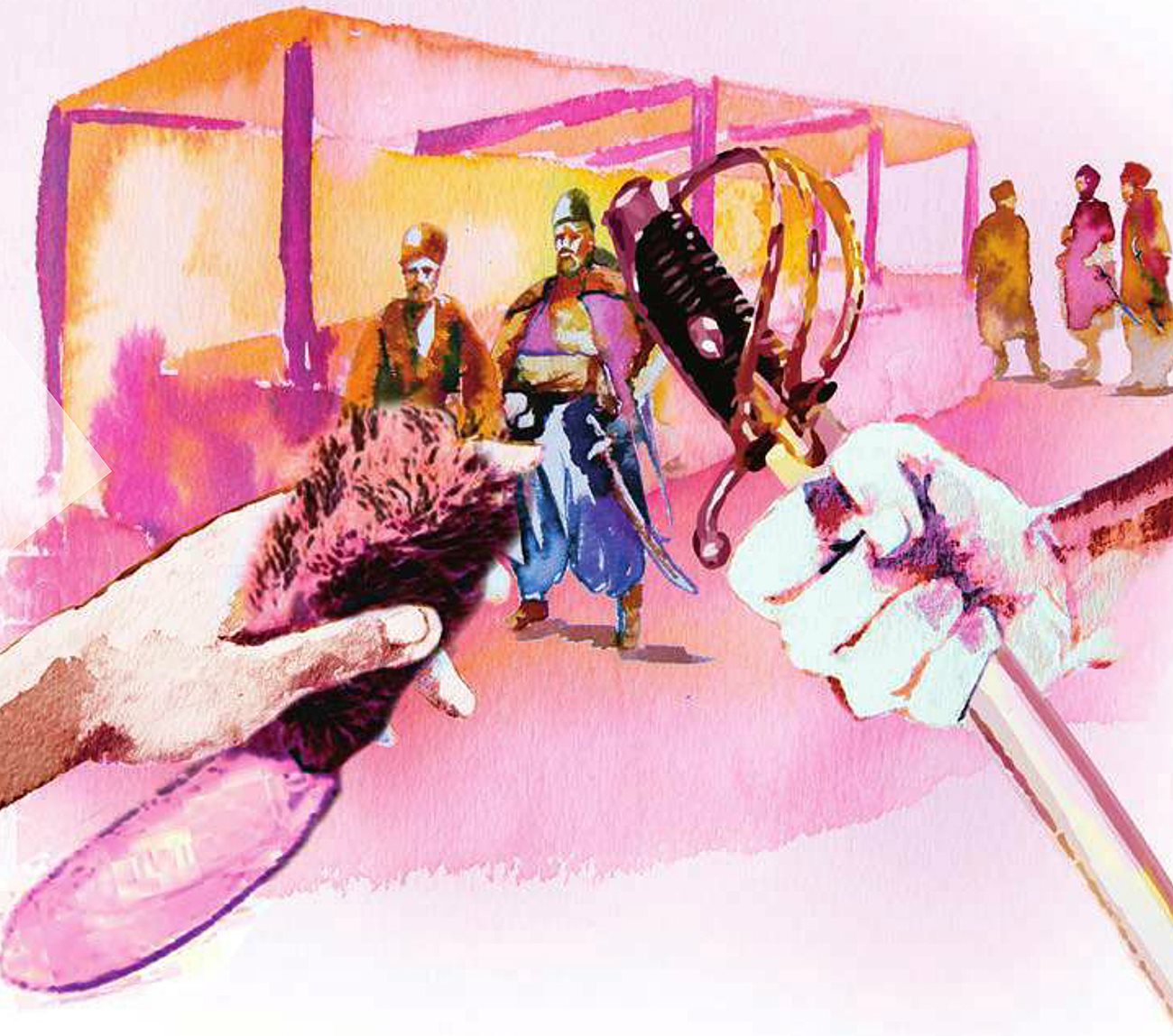Travelers of Al-Andalus: Abu Hamid Al-Garnati’s World of Wonders

As one might expect from the name, a “book of wonders” is not only what one sees and hears on one’s travels, but also what one could not have possibly seen because it did not then nor did it ever exist. At the same time, these “wonders”—of legendary places, mythical people and wholly imagined events—make for good reading. Fusing the world of the impossible with the world of the merely strange-but-true, the style might best be filed under the words of one of his prologues: “Marvels are found in the most remote part of the sky and the earth. Our Lord has ordered us to contemplate the wonders of the world.”

Travel began early in Al-Garnati’s life, and not by choice. When he was 10, his family probably fled Granada at the approach of the Almoravid king Yusuf ibn Tashfin. They took refuge near Cuenca, which at the time belonged to the Christian king of Castile Alfonso vi. Although it was not uncommon for such territorial switching in times of peril, it may have set the boy on his lifelong journey of expecting the unexpected—as in the year 1108 when, at the Battle of Uclés, the Almoravids conquered his land of refuge, and he had to flee a second time.He was one to look for what lurked under the surface of the factual, the visible. For instance, Chapter 1 of his second book described the “world and its inhabitants—men and jinns”; Chapter 2, “its wonders and monuments”; Chapter 3, its “seas and fantastic animals”; and Chapter 4, “its caves, tombs, and ossuaries—with the purpose of inviting contemplation, to escape hell and enter heaven.”When verbally mapping his home country, he began his tour at the Cave of the Seven Sleepers, a legend shared by both Christians and Muslims. He located it just outside Granada, not at its traditional location near Ephesus in Turkey; nearby he also found a magic olive tree that budded, flowered and matured its fruit in a single day.Also beside Granada, he claimed to have found the walled “City of Copper,” whose ramparts were such that if a daring man managed to climb them, he would be overcome by fits of hysterical laughter and plunge inside never to be heard from again. Authors of the Arab East said that the city was located at the world’s outer limits, and they attributed its building to Alexander the Great, who was often conflated with King Solomon in other “books of wonders.”

According to Al-Garnati, it was Solomon’s followers who also built the Iberian cities of Toledo and Zaragoza. Al-Garnati described a magnificent bridge from the first city rising to the sky “like a rainbow,” and of the second, he wrote of its magical powers held by talismans placed in the city gates to prevent scorpions from entering. The city of Sintra, he said, was famous for its apples, and whoever ate of them would receive the power to discern the possible from the impossible.
Although it is likely that during the early stages of what became his lifelong trip to the East he remained for a time in Morocco, it is unknown if he reached the Saharan trade city of Sijilmasa at that country’s edge of the desert, where some of the world’s strangest things really are seen. (For a taste of this still today, visit the day-and-night funfair in Marra-kech’s Djema’a al-Fna.)
At the Strait of Gibraltar, in the city of Ceuta, he paused his journey to relate the legendary stories of the Roc, the huge bird of prey depicted in A Thousand and One Nights and in other magical accounts of the East, as well as the Sole, a flat fish that looks like it is sliced down the middle from tip to tail and often called the “sole of Moses” after the Biblical story that in the parting of the Red Sea, the fish too was parted and thus became two live halves.
Al-Garnati here also related the story of the “Idol of Cádiz,” also reputedly built by Alexander, which was a huge statue, not unlike the Colossus of Rhodes, whose right hand reached into the Atlantic in order to push back the waves and other dangers.
In the year 1115, when he was 34, Al-Garnati reached Alexandria via Sardinia and Sicily. Of this latter land, he wrote:
And in the Green Sea [the Mediterranean] there is a group of islands, where one of them is very big and is called Sicily. It has cities, fortresses and manors; it is one of the richest of God’s countries. By the sea, there is a huge mountain. It is the mountain of fire. From its summit, a blue smoke pours out during the day and by night a fire burns that illuminates as far as ten parasangs [about 6 km].
This reference to Mt. Etna described it fairly accurately.
He later mentioned Alexandria’s famous and entirely real lighthouse, and he gave its measurements. After describing and sketching its architecture, he added the detail of its enormous mirror for reflecting the fire so that those arriving by sea could see it at a distance of even several days offshore. Next, he described “Solomon’s Audience Chamber,” a room famous for the beauty of its columns, particularly one magical one that tilted to follow the sun across the sky like a sunflower.
According to Al-Garnati, visitors put pebbles under this column’s base, which remained suspended in the air, and then were ground to dust as the column rotated its position. (Legends of magically moving columns were common: Marco Polo spoke of such a column in the church of Saint John the Baptist in Samarkand, and today Jordanian tour guides at the Temple of Artemis in Jerash point out a column that is said to have had a similar property.)
In Cairo Al-Garnati studied with the city’s leading scholars of hadith, and he mused over the same questions that have puzzled visitors since the time of Herodotus: Who built the pyramids? Why does the Nile flood? What kind of animal is the crocodile—fish or snake?
In the year 1124, Al-Garnati reached Baghdad via Damascus, quite probably seeing the ruins of Baalbek and Palmyra (then called Tadmur) en route. In Baghdad he was hosted by a scholar and vizier who later became minister under the Abbasid caliphs al-Muqtafi and al-Mustanjid.
Leaving Baghdad after some seven years of residence, Al-Garnati moved to the Persian city of Abhar, just south of the Caspian Sea, and later he reached Saysin, a village near the sea’s northern shore in the Volga River estuary and an important commercial crossroads upstream as far as Kazan, now in Russia. It was during the journey up the sea’s western coast that he visited the city of Derbent at the eastern end of the Caucasus range whose Persian etymology means “locked gate” and is known to the Arabs as Bab al-Abwab, or Gate of Gates.
In Tuhfat al-albab wa nukhbat al-‘aja’ib (Gift of Secrets and Selection of Wonders), the second of his two complete works, he described one of the wonders of the Caucasus:
Near Derbent, he wrote, was a mighty mountain, and at its foot two villages inhabited by a tribe of weapon-makers. When a kinsman died, he was told, they separated the body’s bones from its flesh. If the person was a man, they fed the flesh to crows, and if a woman, they fed it to vultures. In both cases, they put the remaining bones in “bags of gilded Byzantine brocade,” wrote the deceased’s name on it and left it hanging in their home. “This is a wonder indeed,” he ended.
Al-Garnati next followed the Volga upstream to the land of “Bulgar” (far north and east of modern Bulgaria) where he found it so cold that in winter the ground was too frozen to allow for burials. Ever a businessman, he told how Bulgar traders obtained beaver skins, and in exchange they obtained Azeri sword blades that in turn they traded for sable pelts—a shrewd upgrade of animal fur via beaten steel. But mostly he marveled over the beaver dam, a structure he called “miraculous.”
Fifteen years later, around 1150, now aged 70, he arrived in the land of Basgird, modern Hungary. His descriptions here were surprisingly brief, yet they remain important given the paucity of information known about this region at the time. Still, he found space to mention no fewer than 78 of its cities and towns.
Here, he seemed to take on a role of a religious missionary more than a collector of tall tales, and he worked hard to serve a large Muslim population descended from North Africans—maghrebis he called them—who had settled in the area years ago. But some modern scholars suspect that this is not so much wonder or fact but merely a manuscript copyist’s mistake—perhaps Al-Garnati’s own—because elsewhere he wrote about a certain Turkic people living nearby whom he called “Magharebi.”

Whoever they were, he taught them proper Arabic prayer, because he found them suffering from a “deep ignorance.” It seems that his work was successful, because at the end of his stay he was able to write, “Today amongst them, the Friday sermon is preached in more than ten thousand places, since their territory is very wide.”
In Hungary, it appears that Al-Garnati finally put down some family roots when his eldest son, Hamid, married a local woman and remained there in the service of the Christian king of Hungary, Geza ii. King Geza battled the Byzantine empire in alliance with Roger ii of Sicily, who, like Geza, brought into his court many prominent Muslim scholars such as Al-Garnati’s contemporary, the geographer Muhammad al-Idrisi, whose famous world atlas The Book of Roger and travelogue The Book of Pleasant Journeys to Faraway Lands inspired countless later generations of traveling confabulists.
In 1153 Al-Garnati returned to Saysin, where his own wife and other sons had remained. But no place, it seemed, could keep him forever: Soon again he crossed the Caspian to the land of Khwarezm, an oasis in the Amu Darya river delta south of the Aral Sea, where he had visited before and made friends.
He left Khwarezm on a pilgrimage to Makkah the following year, probably via Merv, Isfahan and Basra. In 1155, he returned again to Baghdad, where finally he sat down to put his mental notes in order after long years of traveling and collecting stories. He dedicated his first book to his Abbasid patron.
But still he had miles to go and pages to turn before he unlaced his shoes and put away his pen. In 1162 he arrived in Mosul to write his second book, which he finished in three years. The first word of the title, tuhfa, is most appropriate, as it stems from the same root as the Arabic word for museum, mathaf, a place to store wondrous things. Al-Garnati died in Damascus in 1169 at nearly 90 years old, but his scant historical record does not state whether he had settled down there or was, as usual, just passing through.
The value of Al-Garnati’s writing lies less in his “wonders” than in his witness of some far, cold, out-of-the-way Muslim lands rarely visited by others in his day. Despite an apparent simplicity of manner, his descriptions have a pleasant style displaying keen erudition. Observations are adorned with both objective fact and impossible legend. The reason behind his journeying was not, as far as is known, political duress or economic necessity, but rather the mere love of adventure.
That he embellished what he saw and related clearly false and impossible tales in the same breath as perfunctory lists of his itinerary’s stages should not count against him. He was writing about ‘aja’ib—wonders—after all. Because of this, he became one of Arabic literature’s greatest authors of medieval cosmography, a world view that maintains that truth is found not in the literalist eye of a human beholder, but in the fuller and ultimately unknowable creations of God.
“Travelers of Al-Andalus” is a six-part series selected and adapted from the original 41-part series “El Viajero Histórico,” an idea and production by Ana Carreño Leyva in El Legado Andalusí: Una Nueva Sociedad Mediterránea, the magazine of the Andalusian public foundation El Legado Andalusí, based in Granada, Spain, from 1990 through 2010. The original of this article, by Ingrid Bejarano Escanilla, appeared in issue number, 7, titled "Abu Hamid Al-Garnati y las Marvillas del Mundo.”
( Source: Aramco World )

















